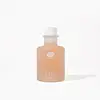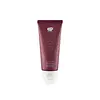What's inside
What's inside
 Key Ingredients
Key Ingredients

 Benefits
Benefits

 Concerns
Concerns

 Ingredients Side-by-side
Ingredients Side-by-side

Aloe Barbadensis Leaf Extract 72.21%
EmollientArtemisia Annua Extract 15%
MaskingAvena Sativa Kernel Extract 5%
AbrasiveGlycerin 5%
HumectantGluconolactone
Skin ConditioningGalactomyces Ferment Filtrate
HumectantLilium Tigrinum Extract
Skin ConditioningHelichrysum Arenarium Extract 0.1%
AntiseborrhoeicScutellaria Baicalensis Root Extract
AstringentPaeonia Suffruticosa Root Extract
Skin ProtectingGlycyrrhiza Glabra Root Extract
BleachingLactobacillus 0.03%
Skin ConditioningBrassica Oleracea Capitata Leaf Extract
Skin ConditioningIpomoea Batatas Root Extract
Skin ConditioningHibiscus Sabdariffa Flower Extract
Skin ConditioningLithospermum Erythrorhizon Root Extract
Skin ConditioningSorbitan Oleate
EmulsifyingXanthan Gum
EmulsifyingAniba Rosodora Wood Oil
AstringentCitrus Aurantium Bergamia Fruit Oil
MaskingCitrus Aurantium Amara Flower Oil
MaskingRosa Damascena Flower Oil
MaskingGeranium Maculatum Oil
MaskingAloe Barbadensis Leaf Extract 72.21%, Artemisia Annua Extract 15%, Avena Sativa Kernel Extract 5%, Glycerin 5%, Gluconolactone, Galactomyces Ferment Filtrate, Lilium Tigrinum Extract, Helichrysum Arenarium Extract 0.1%, Scutellaria Baicalensis Root Extract, Paeonia Suffruticosa Root Extract, Glycyrrhiza Glabra Root Extract, Lactobacillus 0.03%, Brassica Oleracea Capitata Leaf Extract, Ipomoea Batatas Root Extract, Hibiscus Sabdariffa Flower Extract, Lithospermum Erythrorhizon Root Extract, Sorbitan Oleate, Xanthan Gum, Aniba Rosodora Wood Oil, Citrus Aurantium Bergamia Fruit Oil, Citrus Aurantium Amara Flower Oil, Rosa Damascena Flower Oil, Geranium Maculatum Oil
Aloe Barbadensis Leaf Extract 73.7%
EmollientMyristic Acid
CleansingOryza Sativa Extract 5%
AbsorbentStearic Acid
CleansingCetearyl Alcohol
EmollientDecyl Glucoside
CleansingOlea Europaea Fruit Oil 1%
MaskingCitrus Junos Fruit Extract 0.1%
Skin ConditioningLactobacillus/Aloe Barbadensis Ferment Filtrate 0.1%
Skin ConditioningCamellia Sinensis Leaf Extract 0.5%
AntimicrobialButyrospermum Parkii Butter 0.5%
Skin ConditioningLactobacillus 0.1%
Skin ConditioningScutellaria Baicalensis Root Extract
AstringentPaeonia Suffruticosa Root Extract
Skin ProtectingGlycyrrhiza Glabra Root Extract
BleachingAniba Rosaeodora Wood Oil
AstringentCitrus Aurantium Bergamia Fruit Oil
MaskingLinalool
PerfumingAloe Barbadensis Leaf Extract 73.7%, Myristic Acid, Oryza Sativa Extract 5%, Stearic Acid, Cetearyl Alcohol, Decyl Glucoside, Olea Europaea Fruit Oil 1%, Citrus Junos Fruit Extract 0.1%, Lactobacillus/Aloe Barbadensis Ferment Filtrate 0.1%, Camellia Sinensis Leaf Extract 0.5%, Butyrospermum Parkii Butter 0.5%, Lactobacillus 0.1%, Scutellaria Baicalensis Root Extract, Paeonia Suffruticosa Root Extract, Glycyrrhiza Glabra Root Extract, Aniba Rosaeodora Wood Oil, Citrus Aurantium Bergamia Fruit Oil, Linalool
Ingredients Explained
These ingredients are found in both products.
Ingredients higher up in an ingredient list are typically present in a larger amount.
Aloe Barbadensis Leaf Extract is an extract of the leaves of the aloe, Aloe barbadensis, Liliaceae.
Aloe is one of the most well-known natural soothing ingredients, and for good reason. It’s full of water and has a cooling, calming effect on the skin, especially when it’s sunburned, itchy, or irritated. Aloe also helps your skin stay hydrated and smooth by mimicking what healthy skin naturally produces. On top of that, it contains vitamins and nutrients that support skin recovery.
It doesn’t protect you from the sun, but it can help your skin bounce back after too much time in it.
Let’s get into the details:
Aloe contains antioxidant Vitamins A, C, and E, which help fight off free radicals (unstable molecules from things like pollution that can damage your skin).
It’s also rich in polysaccharides, which are natural sugars that help hydrate the skin by acting like the skin’s own moisturizing agents. These, along with other sugars like monosaccharides, help form a protective barrier that locks in moisture.
Aloe works as both a humectant and an emollient. That means it draws water into the skin (humectant) and helps trap it there (emollient), making it an effective natural moisturizer.
You’ll also find a mix of other skin-supporting ingredients in aloe, including folic acid, choline, calcium, amino acids, fatty acids, and even Vitamin B12.
Out of the 420+ species of aloe, Aloe barbadensis is the most widely used in skincare products thanks to its gentle yet effective properties.
There are over 420 species of aloe but Aloe Barbadensis is the most commonly used for topical products.
Learn more about Aloe Barbadensis Leaf ExtractCitrus Aurantium Bergamia Fruit Oil is the oil from the bergamot orange. It is native to Italy.
This ingredient is used to add fragrance to products. It contains limonene, linalool, and linalyl acetate.
The term 'fragrance' is not regulated in many countries. In many cases, it is up to the brand to define this term. For instance, many brands choose to label themselves as "fragrance-free" because they are not using synthetic fragrances. However, their products may still contain ingredients such as essential oils that are considered a fragrance.
When used topically, Citrus Aurantium Bergamia Fruit Oil is a photosensitizer due to its furanocoumarins. Photosensitizers make the skin and eyes much more sensitive to sunlight. Photosensitizers are linked to skin cancer.
However, more cosmetics using Citrus Aurantium Bergamia Fruit Oil are removing the furanocoumarins.
Bergamot oil was also found to have anti-inflammatory, antibacterial and antifungal properties.
Learn more about Citrus Aurantium Bergamia Fruit OilGlycyrrhiza Glabra Root Extract is an extract of the roots of Licorice. It has been found to have several benefits such as skin hydrating, conditioning, and soothing.
One component, glabridin, has extra potent antioxidant and soothing properties. It has also been found to block pigmentation from UVB rays in guinea pigs.
Licorice Root also contains a flavonoid. Flavonoids are a natural substance from in plants. Flavonoids also have antioxidant properties.
Another component, glycyrrhizin, has been found to have anti-inflammatory and antimicrobial benefits. This may make licorice root extract effective at treating acne. However, more research is needed to support this.
Liquiritin is one of the flavone compounds found in licorice. It has been found to help lighten skin by preventing tyrosinase from reacting with tyrosine. When the two react, protein is converted to melanin. Melanin is the substance in your body that gives your features pigmentation.
Learn more about Glycyrrhiza Glabra Root ExtractLactobacillus is a type of bacteria with skin conditioning properties. This ingredient has antibacterial and antifungal properties (that's why we can eat fermented foods).
Learn more about the benefits of lactobacillus ferment here.
Fun Fact: Lactobacillus is used to create wine, yogurt, cheese, sauerkraut, pickles, beer, cider, kimchi, cocoa, kefir.
Learn more about LactobacillusPaeonia Suffruticosa Root Extract comes Peony plant. It has anti-inflammatory and antioxidant properties.
Emerging studies also show peony root may help reduce hyperpigmentation.
Ancient Chinese medicine has used peony root to treat dark spots, but studies are looking into this claim more.
Learn more about Paeonia Suffruticosa Root ExtractScutellaria Baicalensis Root Extract comes from the Baikal skullcap or Chinese skullcap plant. This plant is native to Northeast Asia and can be found in China, Mongolia, Korea, and Siberia.
In cosmetics, Scutellaria Baicalensis Root Extract provides antioxidant and anti-inflammatory benefits. This is due to the flavonoid composition of Scutellaria Baicalensis Root Extract.
In Chinese traditional folk medicine, Scutellaria Baicalensis Root Extract is used to help treat lung issues and hypertension.
Learn more about Scutellaria Baicalensis Root Extract